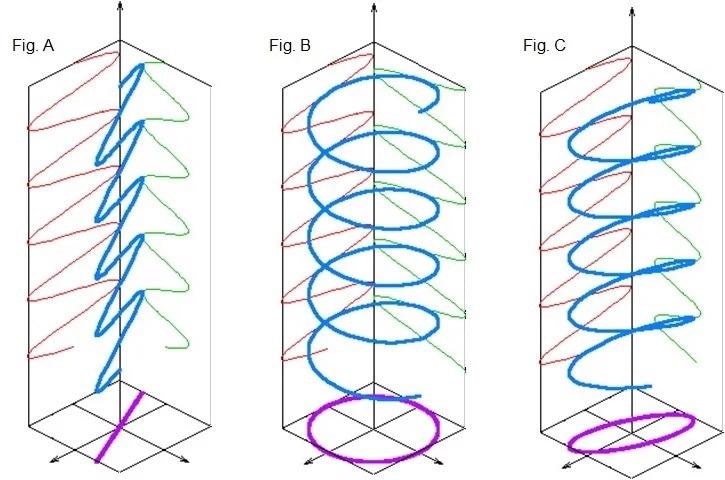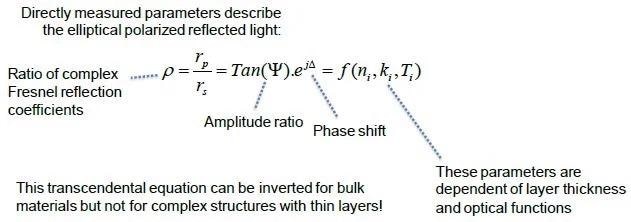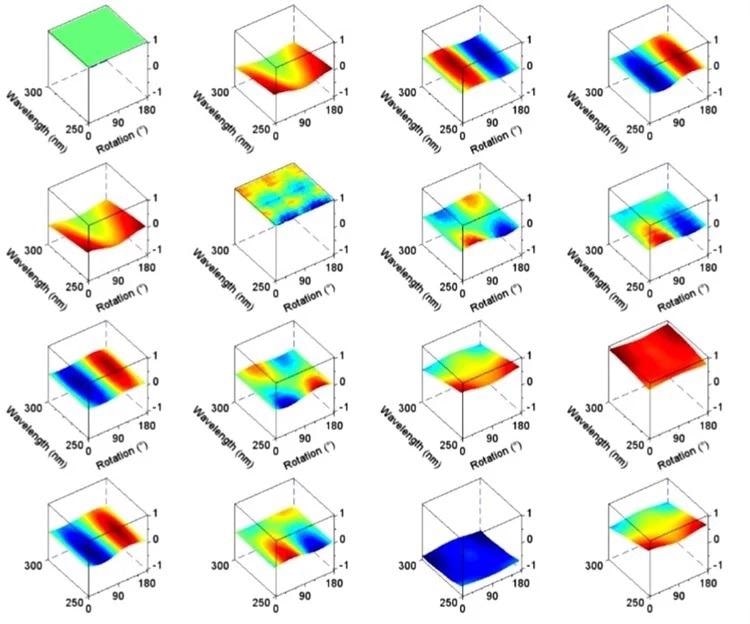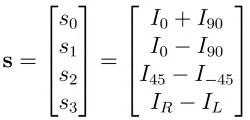In the field of physical optics, a propagating light beam is known as a propagating electromagnetic radiation, with the direction of propagation being horizontal to the direction of the electric and magnetic field vector.
The polarizing direction of light is known as the direction of the electrical vector component. The light will be polarized in a direct manner if the route of the electrical field is consistent during this propagation.
This demonstrates that the perpendicular components of this electric field vector are in phase, or there is no phase variation between them, as seen in Figure A.
As seen in Figure B, if the light is circularly polarized then a 90 degree phase difference happens between the perpendicular components. Typically, where the two components have a minimal variation in phase light is polarized elliptically, as seen in Figure C.

Figures A, B & C: light polarization. Image Credit: Wikipedia
Measured Quantities
No contact is required for Ellipsometry and it is not harmful as an optical technique. It analyzes the optical purposes and thickness of each layer in a multilayer structure. It is extremely sensitive as it is established when analyzing the phase shift of a light beam transporting through a structure of layers.
Phase angle analysis is also not dependent on the absolute intensity of light.
By using monochromators and sources of white light spectral data can be gathered from the sample. The measurements collected from each parameter hold the physical properties of the layer structure, for instance the thickness of layers and the refractive index, but in a very unpredictable way.
In order to measure the ratio of the complex Fresnel reflection coefficients it should be divided into an amplitude term and a phase shift term, which both relate to the purported ellipsometric angles, Ψ and Δ.
Fundamental Equation of Ellipsometry
Parameters which are measured precisely outline the elliptical polarized reflected light:

A model-based indirect numerical calculation can permit the analysis of complex structures which involve more than one layer, and their properties.
- The layer structure is considered together with thickness and optical functions serving as parameters
- The relative phase shift is quantified and compared against measured parameters, which is the numerical regression procedure detailed below.

Image Credit: Semilab Semiconductor Physics Laboratory
Numerical Regression Procedure Based on an Optical Model

Image Credit: Semilab Semiconductor Physics Laboratory
Advanced Formalism
The state of polarization for a wholly polarized light beam can be loosely detailed by using the Jones vectors, like Ex, Ey components:

Once reflection from a sample structure has happened a variation of the Jones vector can be seen by the 2x2 element known as the Jones Matrix. For instance, a shift from a linearly polarized state to an orthogonal state can be defined as:


Example: Mueller Matrix of an optically active sample measured vs. stage azimuth rotation. Revealing rotational symmetry of molecular composition.* (*Example measurement: Monomolecular organic coating on solid substrate—Semilab measurement in cooperation with EPFL). Image Credit: Semilab Semiconductor Physics Laboratory
The more commonplace Mueller Matrix formalism founded on the 4D Stokes vectors can be used to outline Moderately polarized light beams:

S0 is the light intensity as a whole in this example. S1 is the variation of intensity between the horizontal and vertical polarization. S2 is the variation of intensity between linearly polarized components in +45° and -45° directions. S3 is the variation of intensity between left and right oriented circularly polarized components.
The technique of multiplying the material’s Mueller Matrix by the the inbound light’s Stokes vector results in the Stokes vector describing the reflected light:

The Mueller Matrix of the material can be analyzed in the process of measuring the Stokes vector of the inbound and reflected light. This allows for the analysis of material properties by utilizing the Mueller Matrix elements.
The optical symmetries of the material are reflected by the symmetry of the Matrix, which can be performed without the requirement for complex optical modeling of the measurement information. So, it is often utilized as a qualitative means of analyzing an optically active sample.
Instrumentation

Image Credit: Semilab Semiconductor Physics Laboratory

This information has been sourced, reviewed and adapted from materials provided by Semilab Semiconductor Physics Laboratory.
For more information on this source, please visit Semilab Semiconductor Physics Laboratory.